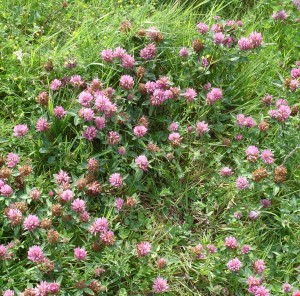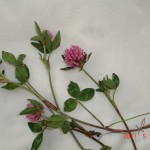Red Clover
Latin: Trifolium pratense
Irish: Seamair dearg
Red Clover is a native species that has long been cultivated as a forage crop by Irish farmers although it is now less widely cultivated than White Clover (Trifolium repens).
It is more suited for hay making than for grazing and, unlike White Clover, its stems and leaves are covered by fine hairs that make it less palatable to grazing animals.
It also has an important ecological function. Bumblebees are endangered because the old, species-rich meadows of the past have all but disappeared. A bumblebee will fly 400 metres to forage for nectar or pollen and they must have a continuous supply from early spring to late autumn. They particularly love clover flowers, red and white, but these don’t flower until June. In the early part of the year bumblebees at Castlewarden survive thanks to species such as Forget-me-nots, Violets, Primroses and Cowslips.
Red Clover is one of the species that features in the debate about the true identity of shamrock and, like the other clovers, it often crops up in the old Irish mythology as a symbol of the prosperity and fertility of land. Red Clover also features in Irish folk medicine as a cure for ailments such as coughs and bee stings.
Flowering specimens of Red Clover can be found from late May onwards at many locations around the course but especially in the Builder’s Paddock and in the practice area.

